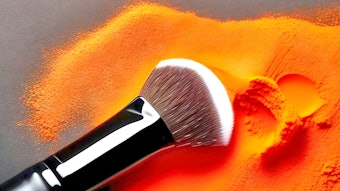Industry expert Tony O'Lenick explains the difference between a pigment with a permanent coating and a transient coating.
Pigments are used commonly in the personal care industry in a variety of products. More and more pigments are coated with oils, silicones, fluoro compounds and a variety of other materials. The nature of this coating is critical for the formulator.
The mechanism affecting coating on the pigment can be of three types, based on: (a) hydrophobic interactions, (b) covalent bonds, and (c) the reaction of the coating with itself or the pigment. All will respond differently, especially in emulsions. The key to understanding pigment coatings is the fact that while a coating may be very stable on a pigment when only the two materials are present, the longevity of the coating on the pigment in a formulation is what dictates product stability.
Coatings bonded to pigments by hydrophobic interaction are the least stable and cause the most problems in formulations. Often an emulsion is made with this type of pigment and over time the coating is stripped off into the oil phase, leaving a non-coated pigment and an oil. The inexperienced formulator may well go back to optimize the formulation by adjusting the emulsifier, but the pigment, in time, may well lose its coating and result in a non-stable emulsion.
The second mechanism of coating is based upon ionic bonding between the pigment and the coating; their charges must be opposite. An example of this is a quaternary-coated clay. This type of bonding is stronger, based upon a cationic/anionic interaction. This added benefit may overcome the problem in formulation, but sometimes in ineffective.
The strongest type of bond is achieved with reactive coating. There are two variations; the first is when the coating bonds by reaction with the pigment and the second bonds when the coating penetrates the pigment and reacts with itself to form an interpenetrating network. The first results in a new molecule, and the latter in an encapsulated pigment. This pigment is very tenacious and seldom migrates in a formulation.
There are a number of extraction techniques that allow for the analysis of the type of coating found on the pigment. The formulator should discuss the nature of the coating with the supplier. This will make the selection process more efficient and it is particularly important when formulating lipsticks, makeup or sunscreens.










